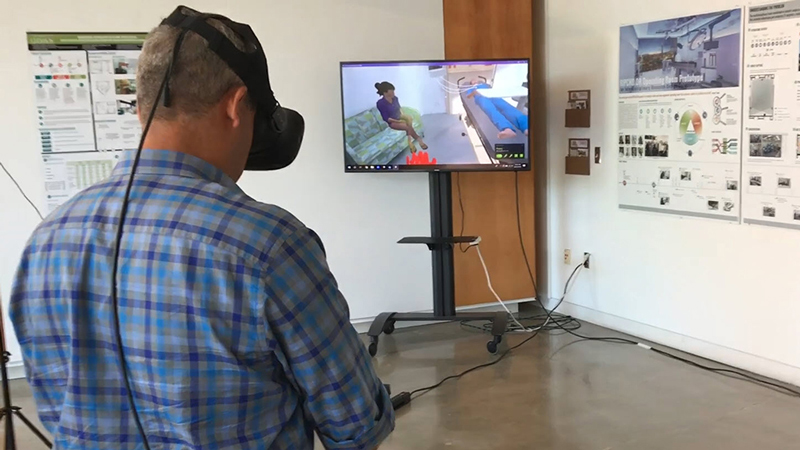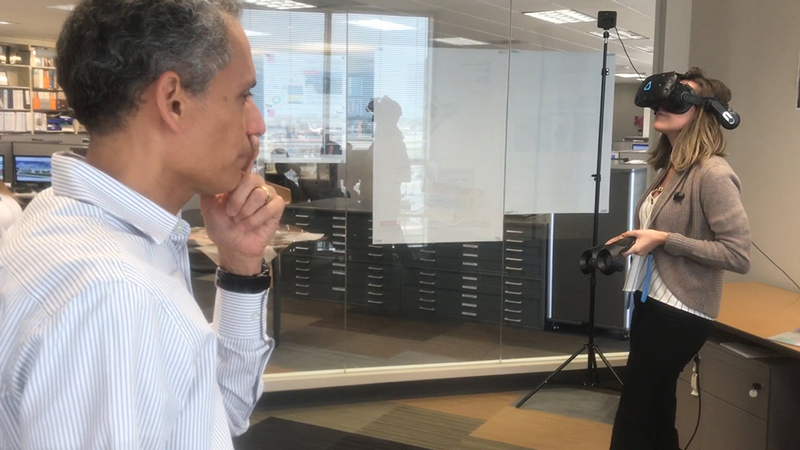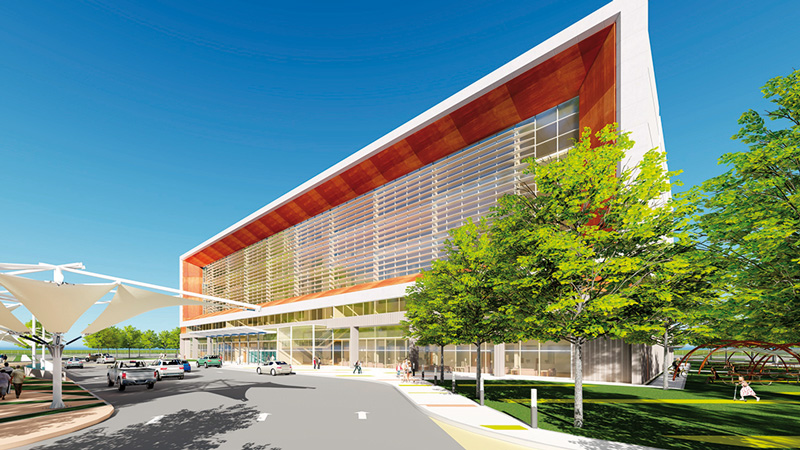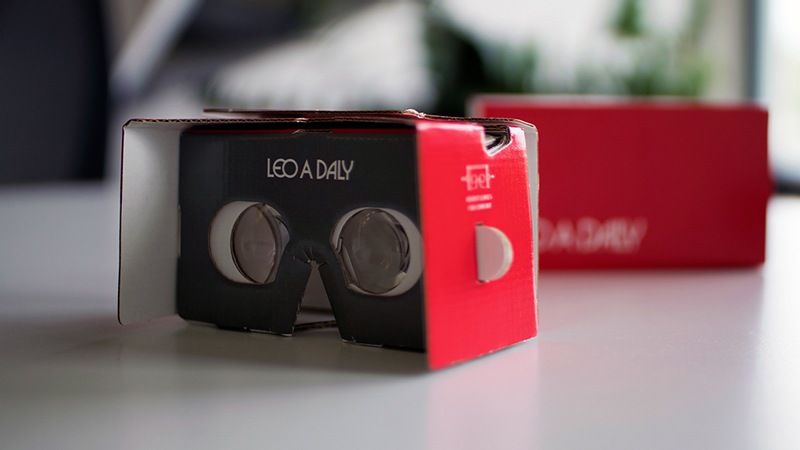Recent Articles
Bridging the analog-digital gap in healthcare
In the high-tech world of healthcare design, it’s still the human experience that counts. In this article for Medical Construction & Design, global health practice leader, Josh Theodore, ACHE, EDAC, shares how LEO A DALY is harnessing cutting-edge technology to transform the patient experience.

Technology is changing at a rapid pace. One constant, though, is the central role of the human experience.
Many of the most exciting technologies right now bridge the analog-digital gap, bringing human beings and technology together in new ways. Augmented Reality and Virtual Reality (AR/VR) are helping designers better understand their end users. Internet of Things (IoT) devices are connecting patients and providers. And telemedicine is improving access to care for a variety of populations.
The following article will discuss some of the emerging technologies that will form the backbone of tomorrow’s healthcare innovation.
Empathy tech
A range of new AR/VR applications is helping us experience how patients might understand the world. To practice empathic design, it’s critical for us to appreciate our users – not just their overt needs, but their underlying motivations, limitations, habits and problem-solving patterns.
The Genworth R70i exoskeleton is one of the most interesting examples of what I’ve started calling “empathy tech.” Rather than enhancing a wearer’s abilities like a typical exoskeleton, the R70i does the opposite. It simulates aging, making the user weaker, slower, and less coordinated. AR goggles and sound-canceling headphones simulate common sight and hearing disorders. We’ve seen it in action, and watched users come out fundamentally changed. We are currently in the process of incorporating the R70i into our design practice.
For insights without the overhead, Genworth also offers virtual experiences on their website. Users can experience simulations of macular degeneration, tinnitus, hand tremors, and other health conditions.
Empathy tech does more to aid design than simply reading about a condition or talking to users. It transports us into an alternate world, helps us build real compassion for users, and changing how we design.

Consensus tech
If empathy tech helps designers think like users, “consensus tech” helps clients think like designers. AR/VR has made a huge difference in how easily we are able to communicate designs to a client and quickly reach decisions.
Designers are trained to think in 3D, and find it easy to look at a drawing and imagine the space it depicts. Clients usually have a hard time doing that, which until recently required a lot of extra work (and cost) to produce perspective drawings, architectural models, and physical mockups. AR/VR has changed all of that. Now, we can put clinicians directly into our designs. With a headset, a surgeon can navigate from their parking space, through the locker room and scrub room; enter the operating room, and check the place out first-hand. Is there enough room to move around? Can the table orientation be rotated dependent on the surgical procedure setup demands? What are the ergonomics of activating the medical gas, swinging the surgical booms and lights? AR/VR gives clients the experience they need to make decisions and move on.
In some cases, this process has allowed us to skip mockups all together. That’s a quarter- to a half-million dollars that can then put back into the project.

The virtual patient experience
From children’s hospitals to senior-living communities, we’re also seeing more projects that include AR/VR equipment as a design feature.
MyndPlay is one example of a company pioneering so-called “immersive therapies” for the brain. Their mind-controlled VR platform allows users to control, influence, and interact with games, apps and movies. The process trains users’ brains to promote cognition, improve attention, overcome mental obstacles. In the memory-care environment, immersive therapies have already been shown to increase brain performance and improve dementia symptoms in memory-care patients.
AR/VR also shows promise as a form of positive distraction in clinical environments. AppliedVR offers a virtual platform that gives patients a respite from scary and painful healthcare experiences. Guided breathing exercises help chronic pain patients reduce dependency on opioid medications. Other applications include specialized content for labor & delivery and pediatrics. Applied VR’s research shows a 52 percent reduction in pain and a 31 percent decrease in anxiety in randomized, controlled trials.
Depending on the mobility needs of patients being treated, different design considerations apply. In a physical-therapy setting, the VR setup should allow the patient to walk around and navigate the space. For stationary patients, like those in hospital beds, the setup can be more permanent.

The virtual doctor experience
As health systems work out the related reimbursement and HIPAA issues, telehealth is gaining traction the private sector.
A telehealth suite gives providers a platform to conduct an exam, talk to patients, families and care-team members, and give specialist consults. Essentially, they can be in two places at once. If they are needed in the main hospital, they can beam into the clinic, and vice versa. This gives health systems more efficiency, allowing patients to see a variety of different specialists in less time, and increasing the number of patients a clinic can see in a day.
A well-designed telehealth setup depends on the position of the cameras, and the size and positions of monitors, and high-quality, high-speed internet. Interacting with a thumbnail-sized doctor can make a patient feel less-than important. The bigger the screen the better. Eventually, we expect holographic technology to become a standard of care.
As telehealth spreads, it will be a lifesaver for rural health facilities and the patients they serve, giving instant access to physicians at the best urban academic medical centers.

Performance-enhancing design
In design, Augmented Intelligence (AI) offers a range of benefits, multiplying our analytical capabilities, and allowing us to reconsider long-held assumptions.
Generative design is a new design process that uses AI to crunch through thousands of minutely different prototypes of a design, adjusting and re-adjusting parameters in search of pinpoint efficiency. In a typical design process, we might be able to efficiently consider three or four options. A generative approach allows us to rapidly vet alternatives and explore architectural shapes that would have been unthinkable before. This promises to revolutionize both the efficiency and artistry of design.
AI also allows designers to harness data from IoT devices, making our designs more efficient and user-friendly. Many health systems currently use Real-Time Location Systems (RTLS) to track the movement of equipment throughout a hospital, and improve the check-in process. Applied to the movement of employees, some are now using it to understand how teams collaborate. As a designer, this data helps us understand how the spaces we design are used in real life. Combined with AI, we are able to simulate a range of different spatial arrangements and identify the most efficient number of steps required to do routine tasks.
We’re just now scratching the surface of AI’s role in design. The opportunities are endless, with applications to everything from site-selection to 3D-printed interior finishes.
Back to the human experience
Technology today is transforming healthcare on every scale – from how designers understand our patients, to how patients access care. As technology develops, it’s critical for designers to remember that the patient experience is at the center of all of it. Connections to technology are only as good as our human connections to each other. With this in mind, technology promises an amazing future for medical design and construction.
About the author
 Joshua A. Theodore, ACHE, EDAC, is global health practice leader for the international planning, architecture, engineering and interiors firm LEO A DALY. He can be reached at jatheodore@leoadaly.com.
Joshua A. Theodore, ACHE, EDAC, is global health practice leader for the international planning, architecture, engineering and interiors firm LEO A DALY. He can be reached at jatheodore@leoadaly.com.
